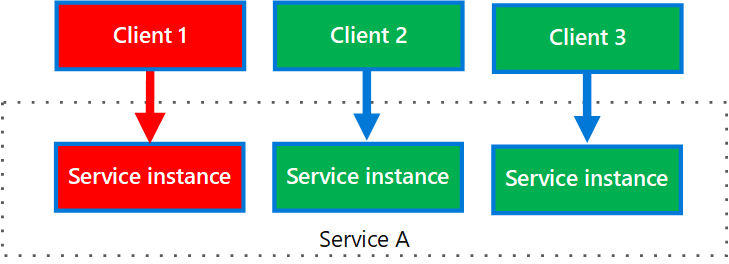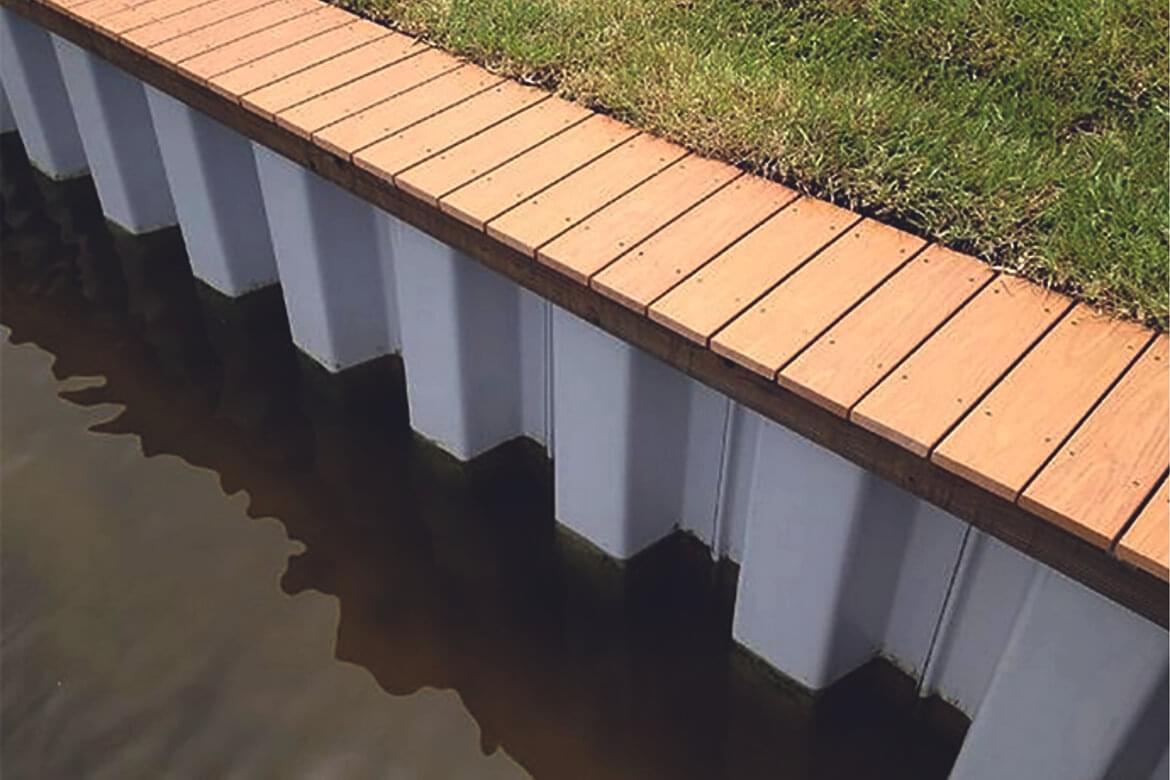Bulkhead on Lake Livingston: Innovative Strategies for Space Optimization
Checking Out the Numerous Uses Bulkhead Structures in Modern Style
Bulkhead structures play a considerable role in modern-day style, offering both aesthetic and functional objectives. They can specify spaces, enhance storage space remedies, and improve illumination. In business setups, they act as centerpieces that show brand name identity - Bulkhead on Lake Livingston. Furthermore, their combination often supports audio administration and sustainable techniques. Recognizing the complete scope of their applications reveals much concerning contemporary layout fads and customer experience. What cutting-edge usages of bulkheads might emerge in the future?
Defining Bulkhead Structures
Bulkhead frameworks play a vital role in contemporary design, offering as essential parts in numerous building styles. These structures are normally specified as increased platforms or ceilings, usually made use of to hide mechanical systems, electrical wiring, or plumbing. Bulkheads can be found in both industrial and property setups, where they supply a seamless blend of capability and appearances. Their layout can integrate lights components and other ornamental components, boosting the total aesthetic charm of an area.
Commonly built from materials such as timber, drywall, or metal, bulkheads can be personalized to fit the architectural style and demands of the building (Bulkhead on Lake Livingston). They serve not only to conceal unsightly infrastructure however also to produce defined zones within open areas. By taking care of the flow of a space, bulkheads add to the spatial organization, making them a substantial aspect of contemporary building technique. Their interpretation encapsulates both useful and aesthetic measurements.
Useful Applications in Residential Style
Bulkhead structures play a crucial role in household layout by helping with room optimization techniques that optimize useful locations. They add visual layout elements that boost the aesthetic charm of living areas. On top of that, these structures give crucial architectural support solutions, making sure the honesty and safety of the home.
Area Optimization Strategies
As modern property styles significantly prioritize reliable use room, innovative approaches emerge to take full advantage of performance without compromising appearances. One noticeable technique includes the integration of bulkhead frameworks, which can define areas while providing essential storage space remedies. These frameworks can be employed to produce upright storage space devices that enhance both company and access. Furthermore, multi-functional furniture, such as foldable tables and exchangeable couches, complements bulkhead designs, allowing rooms to adjust to differing requirements. Open up layout further maximize spatial circulation, motivating adaptability in usage. Integrating built-in shelving and recessed lights within bulkheads also adds to a streamlined setting, making sure that fully of area is used efficiently and sympathetically within the total style.
Visual Layout Components

Structural Assistance Solutions
In contemporary household design, a reliable structural support option is necessary for keeping the integrity of areas while enhancing design and capability. Bulkhead frameworks play a significant duty in this scenario, functioning as both assistance and dividing aspects. They can conceal mechanical systems, such as pipes and electrical wiring, while offering support to the ceiling and flooring systems. By strategically putting bulkheads, engineers can create specified areas within open layout, enhancing functionality without endangering architectural security. In addition, these frameworks can suit lights components, adding to both appearances and practicality. To summarize, bulkhead frameworks are crucial in domestic design, providing functional support solutions that improve both the performance and aesthetic charm of living areas.
Enhancing Aesthetic Appeals in Industrial Spaces
When business areas welcome innovative bulkhead structures, they not only define physical boundaries but also significantly improve the general aesthetics of the atmosphere. These architectural aspects function as aesthetic centerpieces, drawing interest and creating a sense of intrigue. By integrating diverse products such as glass, timber, or metal, bulkheads can reflect a brand name's identification and objective, contributing to a natural design.
The tactical placement of bulkheads can manipulate light and darkness, including depth and dimension to or else flat rooms. This interplay can change an industrial area into an inviting atmosphere, urging consumer engagement. In addition, making use of color and structure in bulkhead layout can evoke particular feelings, enhancing the general customer experience. Eventually, the thoughtful assimilation of bulkhead frameworks boosts the aesthetic appeal of commercial spaces, making them not only practical but additionally visually enchanting, thereby promoting a long lasting perception on site visitors.
Acoustic Efficiency and Noise Management
Reliable acoustic efficiency plays a crucial role in modern design, specifically within commercial spaces where audio monitoring is important. Bulkhead frameworks can considerably boost acoustic top qualities by absorbing sound, minimizing echo, and mitigating sound transfer in between areas. These features are especially valuable in environments such as restaurants, workplaces, and theaters, where clear communication and a positive acoustic experience are paramount.
The tactical placement and style of bulkheads can aid produce sound-buffer areas, efficiently isolating noisy locations from quieter ones. Materials used in bulkhead construction, such as soft surfaces and acoustic panels, add to their sound-dampening capabilities. Additionally, the unification of bulkheads enables the integration of sound-absorbing elements without compromising aesthetic allure. By resolving acoustic performance, designers can create harmonious environments that boost comfort, enhance user experience, and advertise performance, making bulkheads an essential part in the style of modern industrial rooms.
Incorporating Bulkheads for Efficient Area Use
Often forgotten, the assimilation of bulkheads in architectural style can greatly boost space utilization in modern buildings. These architectural elements serve several useful objectives, supplying a method to hide mechanical systems, electrical circuitry, and plumbing without jeopardizing appearances. By tactically placing bulkheads, designers can produce specified locations within open floor strategies, thereby promoting far better organization and flow.
Bulkheads can include storage services and illumination features, making best use of the functionality of otherwise thrown away upright room. In property settings, they might mark zones such as kitchen areas or living areas, while in industrial areas, they can improve the effectiveness of formats by clearly marking pathways and workspace.
Ultimately, the thoughtful assimilation of bulkheads adds to an extra organized and visually appealing setting, enabling versatile spaces that can evolve with the demands of their passengers. This method not only maximizes area however also fosters a more harmonious interaction in between type and function.
Bulkheads in Public Architecture

Architectural Aesthetic Enhancements
While lots of building components go for capability, bulkheads in public architecture offer a double function by improving visual allure. These frameworks visit this web-site often create visual passion through their design, integrating flawlessly with bordering aspects. By utilizing various materials, appearances, and shades, bulkheads can contribute to an one-of-a-kind identification for public spaces, such as flight terminals, galleries, and collections. Their critical positioning aids to delineate areas, guiding site visitors while including depth to the general design. Furthermore, bulkheads can emphasize illumination, producing dynamic atmospheres that change throughout the day. This aesthetic enhancement not just raises the visitor experience yet additionally fosters a local color, making bulkheads a crucial consideration in contemporary public design. Generally, bulkheads embody the combination of form and function.

Structural Assistance Solutions
As architects seek cutting-edge ways to boost the architectural stability of public areas, bulkheads become essential components in the style and building process. These structures offer important assistance, particularly in locations based on hefty foot web traffic or dynamic tons. By distributing weight equally, bulkheads aid prevent architectural failure while permitting flexible design options. In big venues, such as stadiums and convention facilities, bulkheads are often incorporated into the total building structure, ensuring stability and security. Furthermore, they can help with the consolidation of energies and mechanical systems, contributing to the performance of area use. Ultimately, bulkheads stand for a vital option in modern public style, enhancing both performance and protection in community-focused environments.
Environmental Management Procedures
Incorporating environmental management procedures right into public architecture has actually ended up being increasingly vital as metropolitan developers prioritize sustainability along with structural assistance. Bulkhead frameworks offer a double function hereof, serving as obstacles versus erosion and flooding while simultaneously boosting the aesthetic allure of city landscapes. Their style often consists of natural aspects such as greenery, which can improve air top quality and provide environments for wildlife. Furthermore, bulkheads can be crafted with permeable materials that enable water absorption, decreasing drainage and promoting groundwater recharge. This combination of environmental factors to consider not only preserves the environment however also cultivates community resilience against environment adjustment. By making use of bulkheads efficiently, designers add to lasting metropolitan advancement that straightens with modern environmental objectives.
Future Patterns in Bulkhead Layout
Arising trends in bulkhead style show an expanding focus on sustainability, innovation, and performance in modern-day architecture. Designers are significantly incorporating environment-friendly materials, such as recycled composites and bioplastics, to reduce environmental influence. Furthermore, the combination of wise innovation is coming to be widespread, making it possible for bulkheads to serve multi-functional purposes, including energy storage space and climate control.
In metropolitan settings, modular bulkhead systems are acquiring traction, providing adaptability in style and convenience of installment. These systems can be adapted to different landscapes, permitting effective room use. Furthermore, visual considerations are progressing; bulkheads are now being developed to improve aesthetic allure, usually integrating imaginative aspects that resonate with local society.
As climate durability ends up being a top priority, future bulkhead styles will likely focus on flooding protection and stormwater administration, making certain structural honesty while attending to ecological obstacles. This change signifies an all natural technique to architecture that meets both human demands and ecological obligations.
Often Asked Inquiries
What Materials Are Typically Made Use Of for Bulkhead Building?
Common materials for bulkhead building include concrete, steel, wood, and composite products. These choices give durability, structural stability, and resistance to ecological factors, making them ideal for different applications in construction and design tasks.
Exactly How Do Bulkheads Affect Building Energy Effectiveness?
Bulkheads enhance building power efficiency by offering thermal insulation and reducing air leak (Bulkhead on Lake Livingston). They aid keep indoor temperatures, thus reducing home heating and cooling down demands, eventually resulting in lower energy costs and enhanced environmental sustainability
Are There Any Kind Of Building Ordinance Particular to Bulkhead Structures?
Yes, building codes certain to bulkhead frameworks exist, differing by place. These guidelines normally attend to security, architectural honesty, and ease of access, guaranteeing that bulkheads meet called for requirements for building and construction and style within a provided jurisdiction.
Can Bulkheads Be Quickly Customized or Removed Later?
Bulkheads can commonly be modified or removed, depending on their design and construction. Such alterations might need cautious planning and adherence to structure codes to ensure architectural honesty and safety are maintained throughout the process.
What Are the Costs Linked With Mounting Bulkhead Frameworks?
The expenses associated with mounting bulkhead structures can vary substantially, commonly influenced by materials, layout complexity, and labor. Normally, expenses vary from modest to high, relying on the project's particular requirements and place.
Bulkhead structures play a critical duty in contemporary design, serving as crucial components in numerous structure styles. Bulkhead structures play an important role in domestic style by facilitating room optimization methods that optimize YOURURL.com functional areas. Frequently overlooked, the combination of bulkheads in architectural design can considerably boost area use in modern structures. As designers seek cutting-edge methods to boost the structural integrity of public rooms, bulkheads emerge as important parts in the style and building and construction procedure. The prices linked with mounting bulkhead frameworks can vary considerably, generally affected by products, design intricacy, and labor.